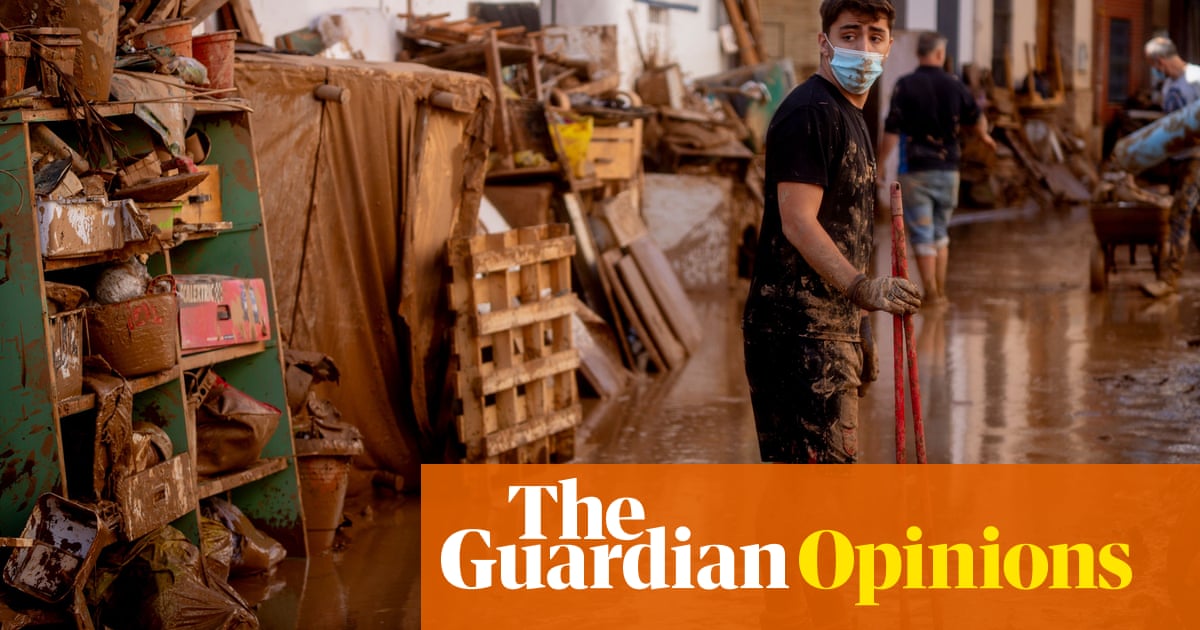At the time of writing, the death toll has risen to 214. Battered cars and other debris are piled up in the streets, large swaths of Valencia remain underwater, and Spain is in mourning. On Sunday, anger erupted as the king and queen of Spain were pelted with mud and other objects by protesters. Why were so many lives lost in a flood that was well forecasted in a wealthy country?
From the global north’s vantage point, the climate crisis, caused by the burning of coal, oil and gas, has long been seen as a distant threat, affecting poor people in the global south. This misconception has perpetuated a false sense of security.
Scientists have long known that heating the climate with fossil fuel emissions will result in the intensification of floods, storms, heatwaves, drought and wildfires. However, it was not until 2004 that the first attribution study formally linked a weather event – the devastating 2003 European heatwave – to our changing climate. Despite the evidence, people have been hesitant to connect extreme weather with the climate crisis.
I founded World Weather Attribution in 2014 to shift the conversation. Our attribution studies are carried out quickly, over days or weeks, in the immediate aftermath of weather disasters to inform people in real time about the role of the climate crisis.
A quick analysis following the floods in Spain found that the climate emergency made the extreme rainfall about 12% more intense and twice as likely. Despite this, in Paiporta, where at least 62 people have died, the mayor said floods were not common and “people are not afraid”. But the changing climate is making once-rare events more common.
Record-breaking events such as these complicate preparedness – how do you communicate the extreme danger of something someone has never experienced before?
We saw this play out recently after Hurricane Helene made landfall. More than 200 people died in floods in the inland southern Appalachians region of the US. Despite warnings of “catastrophic and life-threatening” flooding ahead of the disaster, people were still caught out when disaster struck, and many could not appreciate how extreme the downpours were going to be.
However, in Spain, people were only warned as it was happening. Warnings were not sent until many people were already trapped in flooded houses or in underground car parks, trying to move their cars to higher ground.
The same happened – or rather didn’t happen – in Germany in 2021. No information was given on how to act and, crucially, no support was given to those who could not help themselves: in the German town of Sinzig, 12 residents of a home for disabled people drowned. Back in Spain, the deaths of the inhabitants of one care home have already been reported and I fear more disturbing stories such as this will emerge in the weeks to come.
World Weather Attribution has studied 30 devastating floods, and in almost all cases, including in developing countries, we’ve found that the rainfall was well forecast. But as we’ve seen in Spain, forecasting is not enough. The warnings, when they finally came, did not include vital information on where to evacuate to and how.
Local governments and emergency services are the essential mediator between the weather services and the people in harm’s way. They need to be strengthened and not dismantled, as had been the case with the Valencia Emergency Unit.
Clearly, Spain’s disaster systems need to improve. More widely, we need to ask some hard questions about international disaster funds – should the EU have funds for prevention, rather than cleaning up the mess after a disaster has struck? In my view, it absolutely has to increase funds and develop coordinated plans.
We will see more extreme weather events as long as we burn fossil fuels. Today we are at 1.3C of warming, but we are on track to experience up to 3C by 2100, which would mean similar floods in Spain increasing in frequency and severity. Without creating an action plan and knowing exactly how to implement it, as practised in drills, death tolls will always be high when a heat record is broken or a new region experiences hurricane-scale forces of rain, as happened in Spain.
Investing in people and emergency services will save lives. But governments also cannot build back the same way. Almost everywhere in Europe where people live, rivers are canalised, and all surfaces are sealed with concrete and asphalt to make a comfortable city for cars. If we want to start caring about people instead, we need to give rivers space again, so that they have somewhere else to go, rather than into people’s homes. Urban sprawl across Europe is creating ever more sealed surfaces and exposing an increasing number of people to devastating floods.
We Europeans need to learn and rebuild for a future that is only just emerging. But most urgently, we have to practise survival in a climate-changed world.

